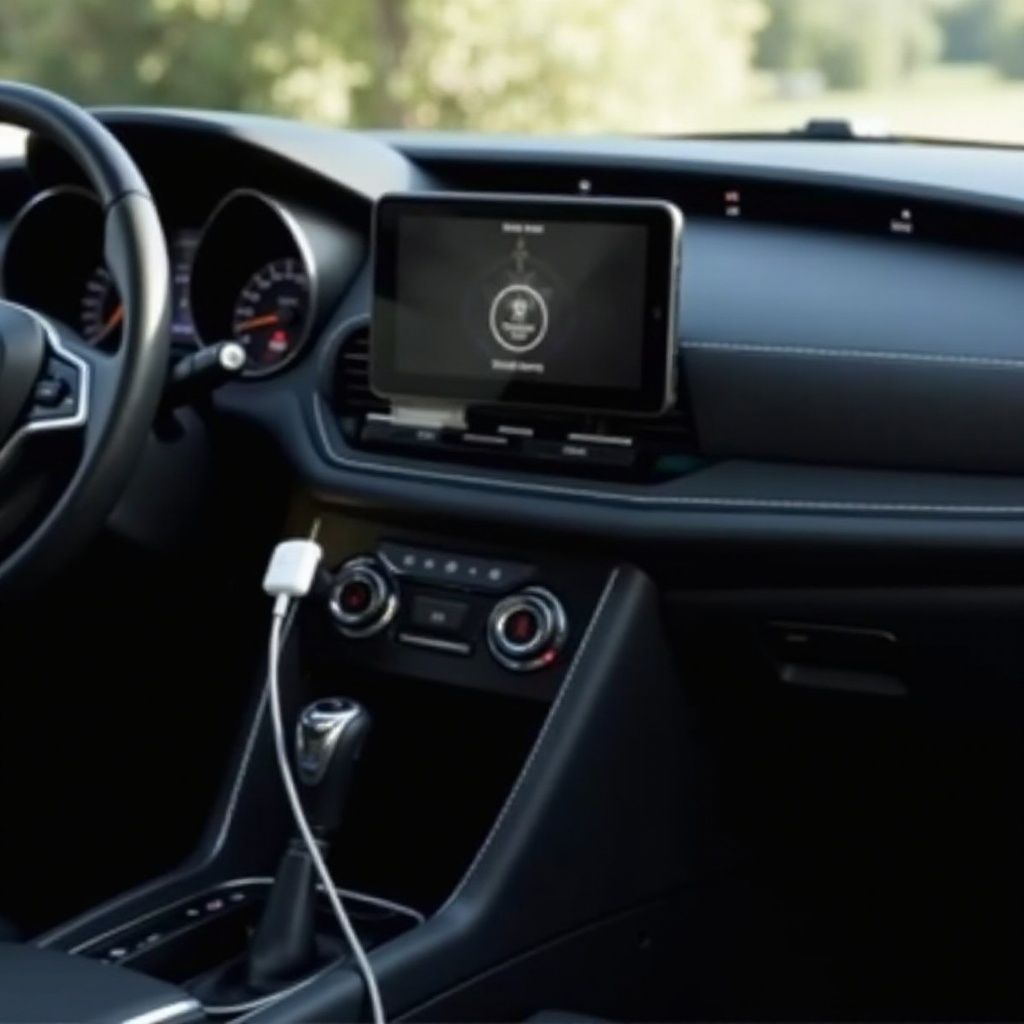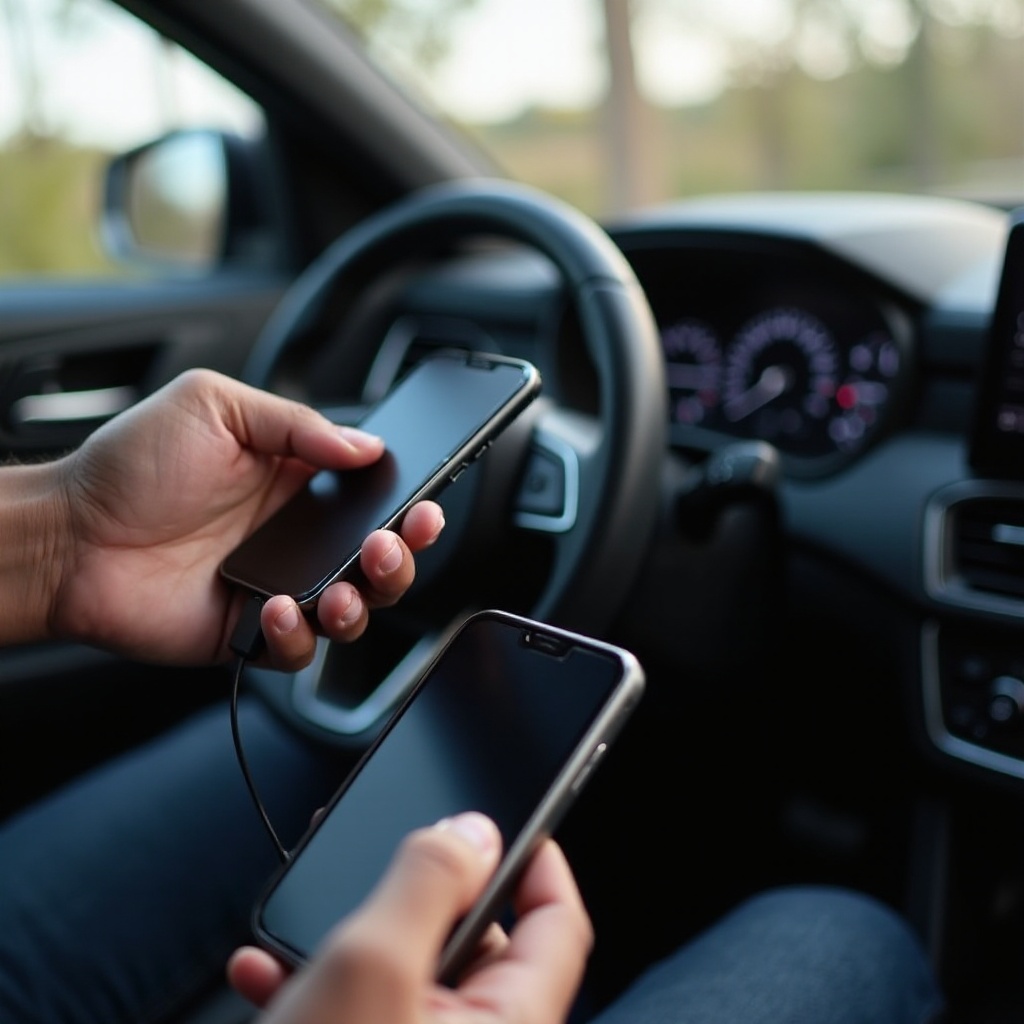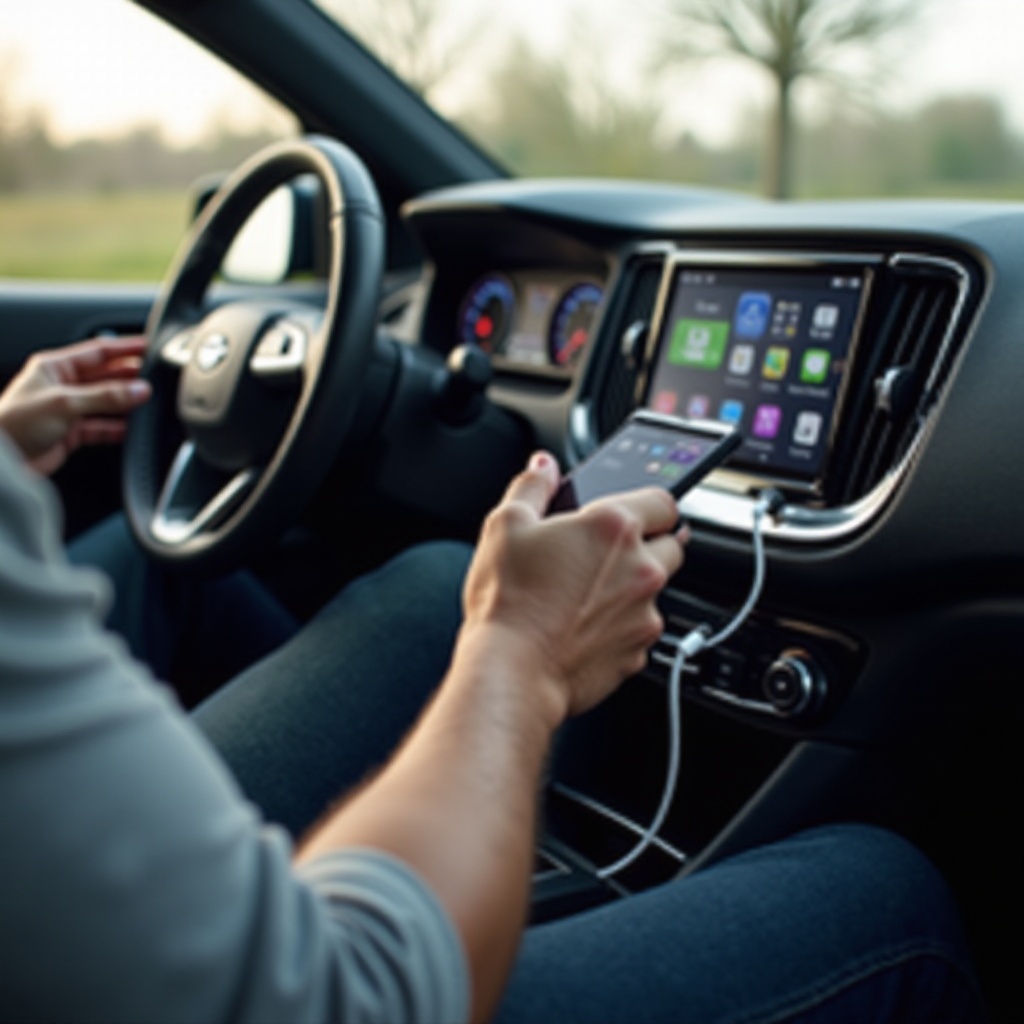Introduction
Connecting your vehicle to your phone using a cable is a straightforward way to access your favorite apps, navigation, and music directly from your car’s infotainment system. This method is not only convenient but also ensures a stable connection compared to wireless methods. In this guide, we will walk you through everything you need to know about connecting your phone to your vehicle, starting from understanding compatibility to troubleshooting common issues. Whether you’re a tech-savvy individual or a beginner, our detailed steps and helpful tips should make the process seamless.

Understanding Compatibility
Before you start, it’s crucial to understand the compatibility requirements for connecting your phone to your vehicle. First, check your vehicle’s user manual or manufacturer’s website to see which types of connections it supports. Common interfaces include USB, Lightning (for iPhones), USB-C, and Micro-USB.
- Device Compatibility: Ensure your phone’s operating system is compatible with your car’s infotainment system. For instance, Android Auto works best with Android devices, while Apple CarPlay is designed for iOS devices.
- Cable Requirements: Use the appropriate cable type for your phone. Using the correct cable ensures a stable connection and prevents compatibility issues.
- System Updates: Make sure both your phone and vehicle system are updated to the latest software versions. Updated software can fix bugs and add new features, ensuring a smooth connection process.
Knowing these basics can save time and prevent unnecessary troubleshooting. Now, let’s proceed to the step-by-step guide to connect your phone to your vehicle.
Step-by-Step Guide to Connect Your Phone
Preparing Your Phone for the Connection
- Unlock Your Phone: Before connecting, unlock your phone. Some vehicles require an unlocked device to establish a connection.
- Enable Data Transfer: Ensure your phone is set up to transfer data via the cable. This option is usually available in the settings under ‘Connections’ or ‘USB Preferences.
Connecting the Cable
- Choose the Right Cable: Select the cable compatible with your phone and vehicle’s port.
- Plug In the Cable: Connect one end of the cable to your phone and the other end to the vehicle’s USB port.
- Select Data Transfer Option: If prompted, select ‘Allow data transfer’ or the equivalent option on your phone.
Syncing Phone with Vehicle’s System
- Access Infotainment System: Navigate to the infotainment screen in your car.
- Select Connection Option: Choose the option to connect your phone (e.g., ‘Connect Android Auto’ or ‘Use CarPlay’).
- Follow On-screen Instructions: Follow the prompts on the infotainment screen to complete the setup. This may involve agreeing to terms and services or allowing access to specific features on your phone.
Once these steps are completed, your phone should be successfully connected to your vehicle, enabling you to access various apps and functionalities.

Optimizing Your Connected Experience
Now that your phone is connected, there are several ways to optimize your in-car experience.
Using Apps and Features
- Navigation Apps: Use apps like Google Maps or Apple Maps for easy navigation. They provide real-time updates and can reroute you around traffic.
- Music Streaming: Access your favorite music apps such as Spotify, Apple Music, or Pandora. You can control your music right from the car’s dashboard.
- Voice Assistants: Utilize Siri or Google Assistant for hands-free control. You can make calls, send texts, or ask for directions without taking your hands off the wheel.
Audio and Navigation Setup
- Audio Quality: Adjust the sound settings in your vehicle’s audio system for the best music experience.
- Navigation Display: Customize how navigation appears on the screen. Choose your preferred map view and set up home and work addresses for easy access.
Safety Tips While Driving
- Hands-Free Operation: Always use voice commands or the vehicle’s built-in controls rather than your phone to reduce distractions.
- Phone Mounts: If you need visual access to your phone, use a mounted holder within your line of sight.
- Pre-set Destinations: Enter your destination in the navigation app before starting your drive to avoid unnecessary distractions.
Troubleshooting Common Issues
Despite your best efforts, you may encounter some issues. Here’s how to troubleshoot common problems.
Connection Problems
If your phone doesn’t connect, ensure all connections are secure and try using a different cable. Restart both your phone and the vehicle system.
Audio and Display Issues
For audio or display problems, go through the settings on both the vehicle and phone to ensure audio output and screen mirroring are properly configured. Resetting the system can often resolve these issues.
Software and System Compatibility
Ensure both your phone and vehicle’s software are up to date. If problems persist, check for any known issues with your system and consider contacting customer support.

Conclusion
Connecting your vehicle to your phone using a cable is simple and enhances your driving experience significantly. By following our guide, you should be able to establish a stable connection and enjoy all the benefits that come with it. Remember to follow safety tips to keep your driving experience enjoyable and secure.
Frequently Asked Questions
What cable do I need for connecting my phone to my vehicle?
You need a cable that matches your phone’s port (e.g., Lightning, USB-C, or Micro-USB) and your vehicle’s USB port.
Why is my phone not connecting to my car?
Ensure the cable is not damaged, all connections are secure, and both devices are updated to the latest software versions.
How can I improve the connection stability between my phone and vehicle?
Use a high-quality cable, ensure both devices have the latest software, and avoid using aftermarket adapters to ensure a stable connection.